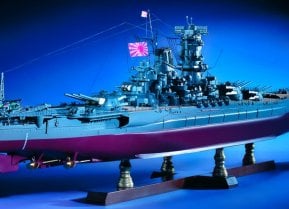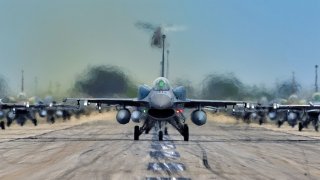The F-16 Block 70 Is One Truly Powerful Fighter Plane
The F-16 Block 70 jets are equipped with the Northrop Grumman APG-83 AESA Radar, advanced avionics, an extended structural service life of 12,000 hours, and critical safety features like the Automatic Ground Collision Avoidance System (Auto GCAS).
Summary: The Slovak Republic has initiated a new chapter in European air defense by acquiring its first two F-16 Block 70 aircraft, marking a significant step in its defense collaboration with the United States and NATO. A Greenville, South Carolina ceremony celebrated this milestone, highlighting the F-16's role in bolstering Slovakia's airspace protection. The Block 70 variant, embodying the latest in fighter technology with advanced radars and avionics, continues the legacy of the F-16 as a versatile and combat-proven aircraft. With 11 more jets in production, Slovakia joins a group of NATO nations enhancing their military capabilities with this modernized fighter.
Slovakia's Air Defense Modernized with F-16 Block 70 Fighters
On Thursday, Robert Kali ák, deputy prime minister and minister of defense of the Slovak Republic attended a ceremony at Lockheed Martin's facility in Greenville, South Carolina to commemorate the delivery of Slovakia's first two F-16 Block 70 aircraft. The event served to mark a new era in European air defense, underscoring the deepening partnership between the United States and the Slovak Republic, both NATO members.
The F-16 Block 70 fighter jets will help the Slovak Republic's Air Force to once again ensure the protection of its airspace with its own capacities.
The two aircraft included a single-seat C-model and a two-seat D-model, and both will remain in Greenville for maintenance training – which is crucial for Slovak Air Force personnel to ensure the smooth integration and effective operation of the F-16 fleet. Additional Fighting Falcons are slated for completion by 2025, with the first group of aircraft anticipated to arrive in the Central European nation by the middle of this year.
OJ Sanchez, vice president and general manager of the Integrated Fighter Group at Lockheed Martin, emphasized the milestone's strategic importance.
"Slovakia is at the forefront of adopting Europe's most advanced 4th generation fighter, the F-16 Block 70. These jets not only represent a stronger alliance between Slovakia, the United States, and NATO allies but also equip the Slovak Air Force with advanced capabilities to face 21st Century Security challenges," he said during Thursday's ceremony.
"As Slovakia joins the ranks of nations operating the F-16, a benchmark NATO fighter, they bolster their defense capabilities and readiness for global operations," Sanchez added. "With 11 more Slovak F-16s under production and testing, we are committed to delivering a total of 14 state-of-the-art jets, further solidifying our partnership."
The Block 70 – A Modern Upgrade For a Proven Warbird
It was in January that there was another celebration for the F-16 – that time to mark the 50th anniversary of the Fighting Falcon's maiden flight. Over the course of five decades, the F-16 has established itself as the most popular Western fighter in its class, and it continues to serve 28 nations around the world.
Since it first entered service in 1979, the Fighting Falcon has engaged in more than 400,000 combat hours and has more than a combined 19 million flight hours. Moreover, the F-16 has been adapted to complete several missions, including air-to-air fighting, ground attack, and electronic warfare. As a combat fighter, it has proven to be highly maneuverable while its combat radius exceeds that of its potential threats.
The proven warbird hasn't gotten older; it has also gotten better.
The F-16 Block 70 jets are equipped with the Northrop Grumman APG-83 AESA Radar, advanced avionics, an extended structural service life of 12,000 hours, and critical safety features like the Automatic Ground Collision Avoidance System (Auto GCAS). Since its integration into the U.S. Air Force in late 2014, the Auto GCAS has been instrumental in saving 13 pilots across 12 F-16 incidents, exemplifying the aircraft's unparalleled safety and performance standards.
While the aircraft is no longer being acquired by the U.S. Air Force, Lockheed Martin continues to build the F-16 for foreign customers around the world – and it remains the world's most successful, combat-proven multi-role jet fighter ever produced, with more than 4,600 aircraft built since production was approved in 1976.
Lockheed Martin currently has a backlog of 133 F-16 Block 70/72 jets to be produced in Greenville, with seven total jets delivered to date for international partners. Other NATO operators include Belgium, Denmark, the Netherlands, Greece, Poland, Portugal and Turkey.
Author Experience and Expertise: Peter Suciu
Peter Suciu is a Michigan-based writer. He has contributed to more than four dozen magazines, newspapers, and websites with over 3,200 published pieces over a twenty-year career in journalism. He regularly writes about military hardware, firearms history, cybersecurity, politics, and international affairs. Peter is also a Contributing Writer for Forbes and Clearance Jobs. You can follow him on Twitter: @PeterSuciu. You can email the author: [email protected].


